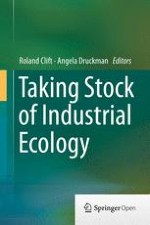1 Introduction – Historical and Institutional Perspectives
2 Review of Empirical Studies from the Viewpoint of Target Wastes and Systems
2.1 Waste in General
2.2 Construction and Demolition Waste
2.3 End-of-Life Vehicles and e-Waste
2.4 Metals in Waste
2.5 Phosphorus in Waste
2.6 Waste Plastics
2.7 Spatial System Boundaries
3 MFA-Based Policies and Concepts for Sustainable Resource and Waste Management
3.1 Conceptual Progress for Sustainable Resource and Waste Management and Its Relevance to MFA – Cases in China and Japan
3.2 Initiatives in National and Intergovernmental Activities, Focusing on Policy Application of Economy-Wide MFA Indicators
4 Current and Future Developments
-
Flows and stocks
-
Technosphere and ecosphere
-
Upstream resource issues and downstream waste issue
-
Valuable materials and toxic substances
-
Energy (with GHGs) and materials (from non-renewables)
-
Theoretical analysis/models and on-site practices
-
Scientific studies and policy applications
